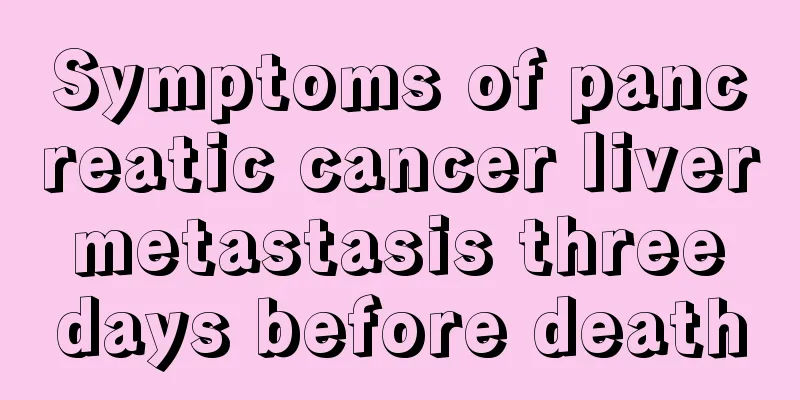Things to note before doing cardiac angiography

|
Cardiac angiography is a way to check whether the heart is healthy. It is mainly used to diagnose coronary artery stenosis. During the examination, a thin catheter will be inserted into the aorta. This examination can effectively diagnose coronary heart disease, angina pectoris, acute myocardial infarction and other diseases. There are also many issues that need to be paid attention to before doing cardiac angiography. Please understand the specific matters in detail. 1. Indications 1. Patients who have been diagnosed with coronary heart disease but have poor response to medical treatment and are planning to undergo coronary artery bypass grafting or PTCA; 2. Patients with recurrent angina pectoris or positive exercise test after myocardial infarction; 3. Patients with a history of chest pain but atypical symptoms, and clinically suspected but undiagnosed coronary heart disease; 4. Patients with no history of angina pectoris or myocardial infarction, but with ischemic ST-T changes or pathological Q waves on the electrocardiogram that cannot be explained by other reasons; 5. If there are dynamic ST-T changes in valvular heart disease, it may be accompanied by coronary heart disease and coronary angiography is recommended. However, patients with valvular heart disease who are scheduled to undergo cardiac surgery should undergo coronary angiography even if they do not have ST-T changes; 6. Patients with congenital heart disease are prone to congenital coronary artery malformations. In order to avoid damaging the coronary arteries during surgery and to correct large coronary artery malformations that can be corrected during surgery, coronary angiography is required before surgery. 7. In the early stage of acute myocardial infarction (within 6 hours of onset), intracoronary thrombolysis or emergency PTCA can be performed. When acute myocardial infarction is accompanied by refractory shock or ventricular septal perforation requires emergency cardiac surgery, coronary angiography is required; 8. Patients with unexplained heart failure, cardiac enlargement, and arrhythmia often need coronary angiography to clarify the cause when it is difficult to make a clinical diagnosis; 9. Follow-up observation of patients diagnosed with coronary heart disease. If the condition worsens after the first coronary angiography, coronary angiography can be performed again to understand the progression of the disease; 10. If angina pectoris recurs after coronary artery bypass grafting, coronary angiography, including graft angiography, is required to understand whether the graft vessels are patency and whether new lesions have appeared; 2. Precautions Preoperative notes: Coronary angiography will be performed under local anesthesia. Do not eat or drink water for 4 hours before the operation. Prepare the skin of the perineum as usual and keep a calm mind. The doctor will have a preoperative conversation before the operation. Postoperative precautions: You need to lie down for 12 hours after angiography, and limb movements are prohibited for 12 hours after puncture. You should drink plenty of water after surgery to promote the excretion of contrast agent. At the same time, you should avoid spicy and irritating foods, and your diet should be light. You should pay attention to eating less high-fat and greasy foods. After recovery, you should pay attention to moderate exercise, which is very beneficial to your body. People with coronary heart disease should pay attention to their diet, which should be low in fat and high in fiber. Emotions should be stable and adequate sleep should be maintained. Develop good living habits, have regular bowel movements, and avoid overwork. |
>>: What does ct angiography mean
Recommend
What to eat to get better quickly from a bad stomach
A bad stomach is a very common and uncomfortable ...
Why is colon cancer called lucky cancer
Bowel cancer is known as the "lucky cancer&q...
What are the classifications of intertrochanteric fractures
Intertrochanteric fracture is not a very common f...
Immunotherapy for bone cancer
Bone cancer refers to a malignant tumor that occu...
Does a bad cervical spine make you sleepy easily?
It is difficult for patients with bad cervical ve...
What are the hazards of galvanizing to the human body?
Many people have to choose galvanizing as a job t...
What is the use of pubic hair? It turns out that it develops at this age
Pubic hair exists in both men and women and plays...
Fruits that clear away heat and reduce internal heat
Fruit is an essential food every day. Of course, ...
Gum recession and blackened tooth roots
Dental health is a key topic of concern to people...
The harm of humidifier to babies
We all know that many electronic products develop...
Tomato juice trick to remove clothes
Tomatoes are very common vegetables in our lives ...
Still hurts after root canal treatment
If the toothache is caused by pulp disease, many ...
What is the correct way to use a silicone powder puff?
Women often need to use powder puffs when putting...
If you have a stitch in the side, don't take it lightly
A stitch in the side is an internal injury. The c...
What are the first aid measures for sudden heart attack
At present, the number of patients with heart dis...









